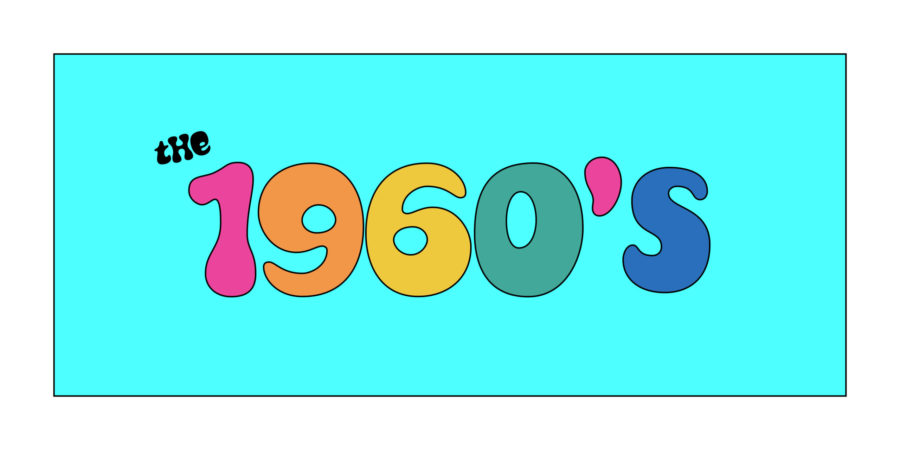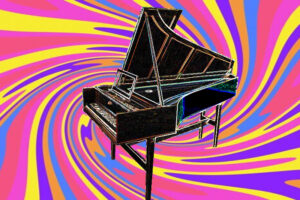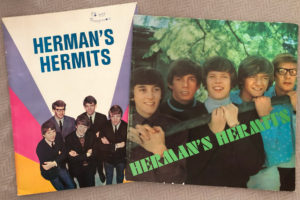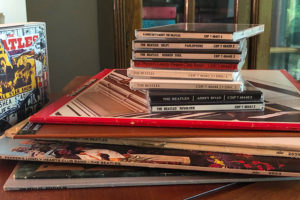In my previous blog I describe growing up in the sixties. I was too young to understand most of the significance of the Sixties’ societal issues. Even so, cultural shifts, social unrest, and political turbulence unfolded (sometimes exploded) around me.
The sixties may seem like ancient history for some, but events during this decade were crucial to setting in motion much of what has happened since.
The genies that the Sixties loosed are still abroad in the land, inspiring and unsettling and offending, making trouble. For the civil rights and antiwar and countercultural and women’s and the rest of that decade’s movements forced upon us central issues for Western civilization—fundamental questions of value, fundamental divides of culture, fundamental debates about the nature of the good life.
— Todd Gitlin (1943-2022) American sociologist, political activist and writer, novelist, and cultural commentator (from his book The Sixties: Years of Hope, Days of Rage)
Several years ago, I was Director of Christian Education in a church. The fiftieth anniversary of the Birmingham church bombing in 1963 was approaching. Spike Lee’s documentary 4 Little Girls was being promoted and we decided to show it one evening at the church. After all, this church’s building had previously stood only two blocks away from Sixteenth Street Baptist Church at the time of the bombing. (This church moved away from downtown in the late sixties.)
When we announced that we would show the documentary, an older gentleman said to me, “I don’t know why we have to keep remembering this.” I was shocked at his attitude. We are doomed to repeat history if we don’t remember and learn from the past.
As I have examined growing up in the sixties, I am fascinated with the diverse transformations that were taking place. From feminism, gay rights, and racial equality to the evolution and influence of TV and music. And, in the midst of violence and hatred, there were advocates for peace and love.
Below is a timeline of events—which represent some of what I remember, along with other important developments that were catalysts for further advancements.
Preamble to the Sixties
1955
July 9: Bill Haley’s version of “Rock Around the Clock” ran eight weeks at number one on the Billboard charts. The song had its roots in jazz, blues and R&B, along with gospel and country—thus the rock & roll era began.
December 1: African American Rosa Parks refused to give up her seat on a public bus to a white passenger in Montgomery, Alabama. This began a bus boycott and legal case against segregation of Montgomery’s bus system.
1956
April 21: Elvis Presley’s first number one hit, “Heartbreak Hotel” topped the charts for eight weeks.
1957
October 4: USSR launched Sputnik 1, the first artificial space satellite.
1958

February 17: The Campaign for Nuclear Disarmament began in London and introduced the “Peace symbol.” In the early 1970s I remember my friends wearing peace symbols on their clothes and on jewelry, such as ear rings. The peace symbol is still popular today. In 2015, French artist Jean Julien created a new symbol in the wake of the attacks in Paris that year. He imposed on the original symbol, lines representing the Eiffel Tower. It inspired the world to stand in solidarity with France.
Timeline of Selected Events during the Sixties
1960
February 1: Students in Greensboro, North Carolina started the first sit-in to protest segregation at lunch counters. Similar protests began all over the South.
May 9: The birth control pill was approved for use.
July 11: Harper Lee published To Kill a Mockingbird.
September 8: President Dwight D. Eisenhower dedicated the George C. Marshall Space Flight Center in Huntsville, Alabama. This was an important event particularly for Alabama. I remember hearing about famous scientists and engineers such as Wernher von Braun working there. And, because many researchers and scientists moved there, in order to accommodate their families, schools in Huntsville became famous for innovation. In 1969 Grissom High School opened—named in memory of Virgil Grissom, one of the astronauts who died during a full-scale flight simulation in 1967. The school’s design incorporated innovative curriculum and ideas. Among these were individualized instruction, team teaching, independent study programs, and modular scheduling. The floors were carpeted and comfortable furniture—that was light enough to be moved easily for grouping—was in each room. Bright colored walls promoted good morale. In the early 1970s teachers from my junior high visited this school. Our math teacher came back talking about the “pods” and how different the classrooms were from ours. In 2007, Newsweek magazine ranked Grissom among the top five percent of all high schools in the United States.

When I was in the seventh grade, our class took a field trip to visit Marshall Space Flight Center.
November 8: John F. Kennedy defeated Vice President Richard Nixon to become the 35th President of the United States.
1961
January 20: John F. Kennedy gave his inaugural address calling upon citizens to “ask not what your country can do for you—ask what you can do for your country.”
March 1: President John F. Kennedy signs an executive order creating the Peace Corps.
May 1: Harper Lee of Monroeville, Alabama wins the Pulitzer Prize for To Kill a Mockingbird.
May 4: Civil rights activists (Freedom Riders) travel on public buses and trains across the South to challenge segregation.
May 25: President John F. Kennedy, in a speech to a joint session of Congress, proposed the moon program.
August 13: Berlin begins construction of a wall (Berlin Wall) dividing the city and aimed at curbing the emigration of people from the communist east into the democratic west.
1962
January 12: US forces participate in combat in Vietnam for the first time.
March 19: Bob Dylan released his first album.
September 27: Silent Spring by Rachel Carson was published—beginning the modern environmental movement.
October 1: Following a riot that left two dead and over three hundred injured on September 30, the first African American student, accompanied by the National Guard, enters Ole Miss University.
October 5: The Beatles’ released their first single, “Love Me Do,” in the UK.
October 16-28: The Cuban Missile Crisis brings the world to the brink of nuclear war.
1963
February 19: Betty Friedan published The Feminine Mystique and the modern feminist movement was born.
April-May: Police attacked Civil rights activists in Birmingham, Alabama.
April 16: Dr. Martin Luther King Jr. wrote “Letter from Birmingham Jail.” He wrote it in response to “A Call for Unity” written by eight local white clergymen. Dr. King, considered an outsider, responded: “Injustice anywhere is a threat to justice everywhere.”
April 21: First artificial heart was implanted at a Houston hospital.
June 11: Gov. George Wallace’s “stand in the schoolhouse door” took place at the University of Alabama. Growing up in Alabama, it was impossible to ignore the statement Wallace made during his inaugural speech in January that year, “segregation now, segregation tomorrow, segregation forever.” I was only six years old in 1963 and don’t particularly remember this event, but this ideology permeated Alabama politics for years. I have a friend who is now a judge. He often mentioned these events during that time, but I can’t recall responding in any way. My parents did not discuss politics so I had no real knowledge of how to discuss issues like that.
July 26-28: The Newport Folk Festival featured Bob Dylan, Pete Seger, Joan Baez, Phil Ochs, and Peter, Paul & Mary.
August 28: Dr. Martin Luther King Jr. gave his speech, “I Have A Dream . . . “ at the National Mall in Washington, DC during the March on Washington for Jobs and Freedom.
September 15: Bombing of Sixteenth Street Baptist Church in Birmingham, Alabama which killed four children.
November 22: President John F. Kennedy was assassinated in Dallas, Texas. Probably most people alive when this happened remember that day. I was in the first grade and we were all called to the auditorium and given the news. We were let out of school early.
November 25: The state funeral of John F. Kennedy took place. That day was declared a national day of mourning and, as I remember, schools were closed. The procession and funeral were broadcast on television. Approximately one million people lined the route of the funeral procession, from the Capitol back to the White House, then to St. Matthew’s Cathedral, and finally to Arlington National Cemetery. Not since the funeral of Britain’s King Edward VII, in 1910, had there been such a large gathering of presidents, prime ministers, and royalty at a state funeral. There were 220 foreign dignitaries from 92 countries, five international agencies, and the papacy in attendance. When Jacqueline Kennedy and her children, Caroline and John Jr. left the cathedral, they stopped on the steps as the casket was carried down. It is then one of the most iconic images of the 1960s was taken. John F. Kennedy Jr. salutes his father’s coffin while standing next to his mother, who is holding Caroline’s hand. Senator Ted Kennedy and Attorney General Robert F. Kennedy are seen behind them. What I remember most is seeing the long line of black limousines following the caisson—especially as it traveled through the serene, graceful, and winding road in Arlington National Cemetery.
1964
January 11: The first Surgeon General’s Report on Smoking and Health which contradicted decades of tobacco advertising was issued. They declared smoking “Hazardous to Your Health.”
January 13: Bob Dylan released his third album and the title track “The Times They Are a-Changin’” becomes an important protest song of the era.
February 9: The Beatles first appeared on The Ed Sullivan Show. I am fairly certain my sister and I watched this, but I do not have a clear memory of it.

April 4: Beatles’ singles occupy the top five slots on the Billboard Hot 100. It was unprecedented and has never been repeated. The songs were: “Can’t Buy Me Love,” “Twist and Shout,” “She Loves You,” “I Want to Hold Your Hand,” and “Please Please Me.”
July 2: The Civil Rights Act of 1964 outlawed discrimination in public facilities and prohibited employment discrimination.
August 27: Disney released the film Mary Poppins.
October 1: Berkeley Free Speech Movement began with a student sit-in.
October 14: Dr. Martin Luther King Jr. won the Nobel Peace Prize.
October 25: The Rolling Stones appeared on The Ed Sullivan Show.
1965
February 21: Malcolm X was assassinated in New York City.
March 7: “Bloody Sunday” march in Selma, Alabama took place.
March 8: US Marines land on beaches near Da Nang, signaling direct involvement of American combat units in the Vietnam War.
July 25: Bob Dylan goes electric and was booed by some at the Newport Folk Festival.
July 30: The creation of Medicare and Medicaid.
August 6: Voting Rights Act of 1965 was signed into law.
August 11: Six days of massive race riots erupt in Watts, Los Angeles. Thirty-four people died and a thousand were injured. Many buildings were looted or destroyed.
September 5: Michael Fallen coined the word “Hippie” in the San Francisco Examiner.
December 3: The Beatles released Rubber Soul album in the UK.
1966
May 16: The Beach Boys’ released their album Pet Sounds.
June 27: Freak Out! a concept album by Frank Zappa’s Mothers of Invention was released.
June 30: National Organization for Women (NOW) founded.
August 5: The Beatles released Revolver.
August 29: The Beatles perform their final concert at Candlestick Park in San Francisco before retiring from live performance.

September 8: Star Trek TV show debuted. I only saw this show a few times. At the time, I was not too interested in science fiction.
September 12: The TV show The Monkees debuted. I loved this show! I probably watched every episode and I also bought their records and albums.
October 15: The Black Panther Party was established in Oakland, California.
1967
January 15: First Super Bowl – the Green Bay Packers beat the Kansas City Chiefs
February 5: The Smothers Brothers Comedy Hour debuted on TV.
May 26: The Beatles release Sgt. Pepper’s Lonely Hearts Club Band.
June-September: This has been called “The Summer of Love” in recognition of the hippie movement.
June 12: The US Supreme Court ruled that state laws prohibiting interracial marriage are unconstitutional.
June 16-18: The Mamas and the Papas organized the Monterey Pop Festival—the first large extended rock festival.
1968
January 22: The comedy Rowan & Martin’s Laugh-In debuted. The show was a series of rapid-fire gags and sketches. Many were politically charged or contained sexual innuendo. I remember watching and being shocked at some of the jokes and scenes. I probably did not understand some of it though. I mostly remember Lily Tomlin as Ernestine, the obnoxious telephone operator and Ruth Buzzi as Gladys—a drab spinster who typically hit people repeatedly with her purse.
April 4: Dr. Martin Luther King Jr. was assassinated in Memphis, Tennessee.
June 5: Senator Robert F. (Bobby) Kennedy, who had just won the California presidential primary, was assassinated.
August 26: There were protests at the Chicago DNC Convention
November 22: The Beatles released the White Album.
1969
June 27: Police raided Stonewall Inn, a gay bar in NYC’s Greenwich Village. This is seen as the beginning of the gay rights movement.

July 20: Apollo 11’s Apollo Lunar Module lands and man walked on the moon.
August 15-18: Woodstock music festival: Three Days of Peace, Music & Love
November 9: Rolling Stone magazine premiered.
November 10: Sesame Street debuted.
November 20: Native American protesters occupied Alcatraz for nineteen months.
Post Sixties
1970
April 4: The World Trade Center was completed.
April 22: The first Earth Day.
May 4: Protests against the war spreading into Cambodia turned deadly. Four students were killed and nine wounded at what is now called the Kent State massacre.
July 4: American Top 40, hosted by Casey Kasem, became the first successful nationally syndicated radio program featuring a weekly countdown.
August 25: Elton John performed in the US for the first time.
September 18: Jimi Hendrix died of a drug overdose at the age of twenty-seven.
October 4: Janis Joplin died of an overdose at age twenty-seven.
October 5: The Public Broadcasting System (PBS) began operations.
Dec. 2: President Nixon established the US Environmental Protection Agency (EPA).
Dec. 23: The North Tower of the World Trade Center in NYC was completed. It was the tallest building in the world at the time.
Dec. 31: Paul McCartney filed a lawsuit to dissolve The Beatles.
1971
July 1: The 26th Amendment was ratified, allowing 18-year-olds the right to vote.
The Legacy of the Sixties
It is fascinating to see the many threads from the Sixties that continue to weave through our society. The significance of the Sixties can not be underestimated. From TV shows and music to ecology and social awareness . . . we, as a culture have advanced— albeit with growing pains together with fits and starts.
I feel fortunate to have grown up during that decade. I matured along with the bourgeoning of rock music, TV, and the social sensibilities of justice and equality tempered with peace and love.
Finally, I share a few of my favorite quotes from Dr. Martin Luther King Jr. whose activism through nonviolence and civil disobedience remain an inspiration today.
“Let us realize the arc of the moral universe is long but it bends toward justice.”
“I have decided to stick with love. Hate is too great a burden to bear.”
“Darkness cannot drive out darkness; only light can do that. Hate cannot drive out hate; only love can do that.”
“We must learn to live together as brothers or perish together as fools.”
— Rev. Dr. Martin Luther King Jr. (1929-1968) American Baptist minister and activist










Leave a Reply
Your email is safe with us.